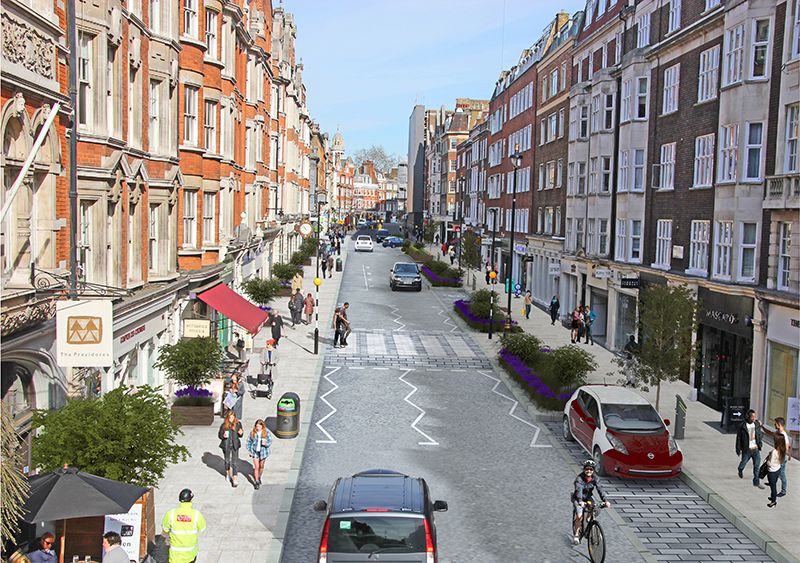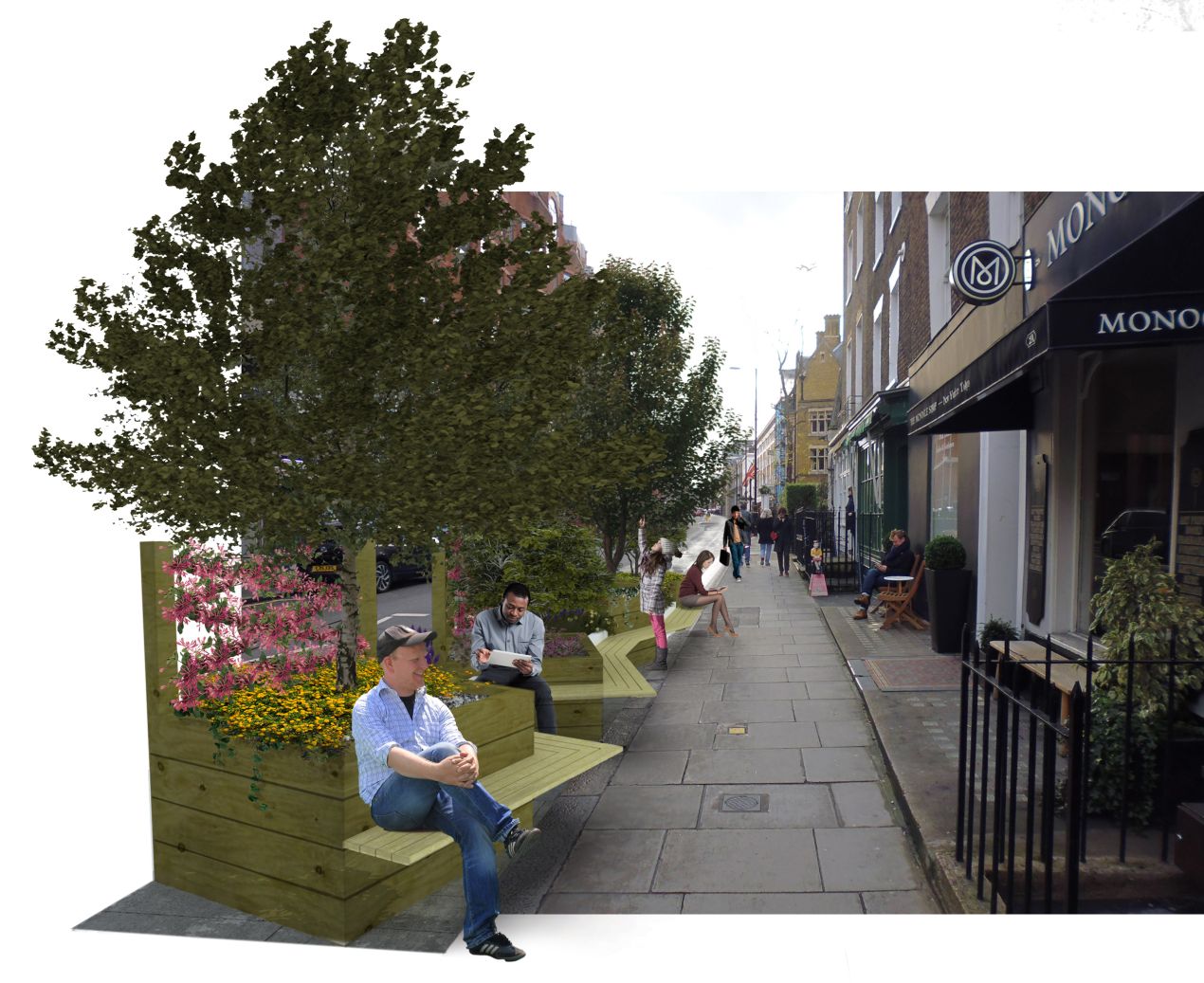Steer Davies Gleave is delighted that Westminster City Council (WCC) has been successful in its application for Low Emission Neighbourhood funding for Marylebone. Steer Davies Gleave worked with officers, the local neighbourhood and community groups, business improvements districts and land owners to develop the bid. The GLA noted that they received a number of high quality bids from across London proposing a range of innovative measures and confirmed that WCC has been awarded indicative funding of up to £1 million over the next three years to support implementation of the LEN proposals.
Marylebone is a true neighbourhood with families and schools, green spaces and playgrounds, a thriving high street of local shops and national retailers, and a busy café and restaurant scene. But the two wards that make up Marylebone – Bryanston and Dorset Square and Marylebone High Street – have been measured as suffering the worst air pollution in London.
The Bid
We believe one the key selling points of the Marylebone LEN is the range of stakeholders and their high degree of engagement with, and support for, the programme. Development of the bid included meetings hosted by the stakeholders. The purpose of the meetings was to enable stakeholders to contribute ideas, shape the LEN measures, provide feedback on concept design and agree how they would support the LEN collectively. These meetings provided the basis for an active and engaged steering group which will now guide delivery of the LEN and be integral to the implementation of the LEN measures. Working in partnership we could also put forward £1 million in match funding as part of the bid proposition.
The Bid was also characterised by the involvement of WCC’s Cabinet Member for Sustainability and Parking, Councillor Heather Acton. Her energy and proactivity made a real difference to the development of the bid and the level of commitment shown to the GLA and TfL.
The proposed LEN measures are built on a number of tried and tested initiatives and will be implemented alongside a range of existing or planned infrastructure projects.
The programme focuses on improving air quality through behavioural change measures that have a direct impact on reducing emissions. These measures seek to reduce the number of delivery, servicing and waste vehicles within Marylebone, encourage the uptake of greener/smarter vehicle technology and encourage businesses to retime their deliveries wherever possible. Fewer vehicles travelling within the LEN area will result in a reduction of transport emissions and in overall vehicle kilometres travelled. The measures are:
- Marylebone Green Club Building Energy Efficiency Scheme.
- Area-wide Delivery and Servicing Programme.
- Encouraging Uptake of Cleaner Vehicles.
- Emissions-based On-Street Parking Charges.
- Residents’ Electric Vehicle Charging Pilot.
- Smart Management of Taxi-ranks and Fast Charging.
- Electric Delivery Vehicle Scheme with UPS.
- No-idling Enforcement, Awareness Raising and Campaign Days.
- Schools Emissions Engagement Scheme.
- Play Streets Electric Vehicle Charging in Cavendish Square Car Park with Q Park.
Our site-specific urban realm measures will create vibrant spaces that are well-connected, make efficient use of limited road space, integrate electric vehicle charging and introduce an array of greening measures to help improve air quality on local streets. These are:
George Street: parts of George Street feature attractive and distinctive greenery, both in the public domain and within private spaces. The concept for this street is to use the existing green infrastructure as the basis for further enhancements, adding other landscape measures to create a ”green spine” through the heart of the Marylebone LEN.
Marylebone High Street: focused public realm improvements between the central section of Weymouth Street and George Street to reduce the dominance of traffic, improve conditions for pedestrians and introduce a lot more greenery. The design approach could then be extended further north and south of this section. For example, to Oxford Street to the south and Marylebone Road to the north (subject to funding availability, technical feasibility and stakeholder agreement).
Paddington Street Gardens: these Gardens provide an important and informal public green space in the Marylebone LEN, however the two halves of the Gardens are separated by Paddington Street and the design concept is to better connect these two green spaces both visually and physically, and introduce more green within the street environment that also makes a contribution to local air quality and climate change.
Westminster University Entrance Pocket Plaza: the main entrance of Westminster University’s Marylebone Campus fronts Marylebone Road and presents a noisy and polluted environment. The design concept proposed as part of the LEN is to create a ‘pocket plaza’ that students and visitors to the University can use, and that incorporates a planted buffer which helps mitigate the pollution from Marylebone Road. This could be designed in collaboration with students from the University’s School of Architecture and the Built Environment, which is located at this campus.
For more information about the LEN proposals or to discuss any of these ideas please contact Sharon Daly or Simon Hollowood.

